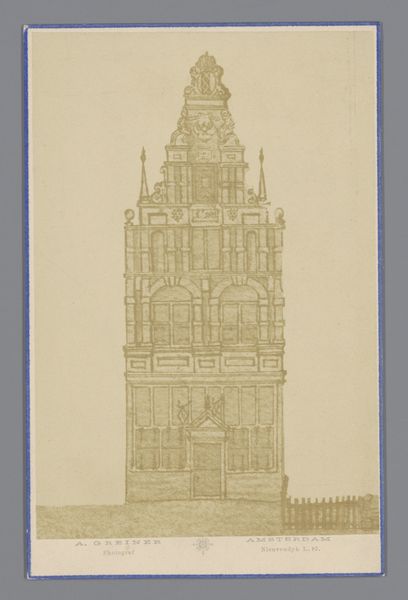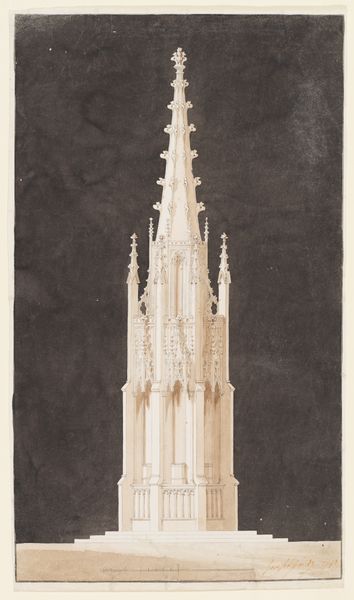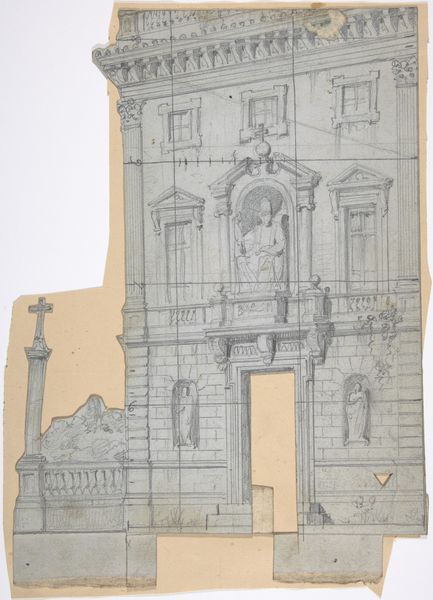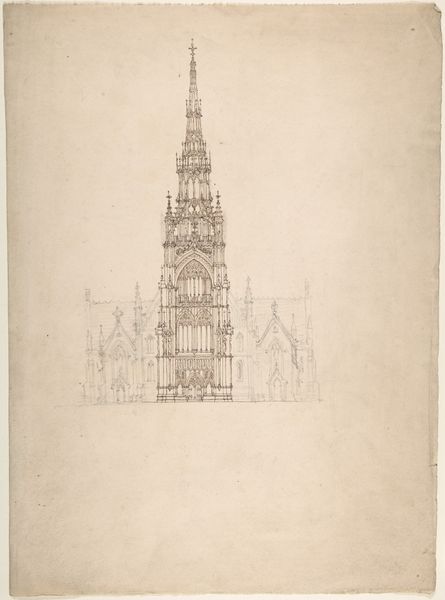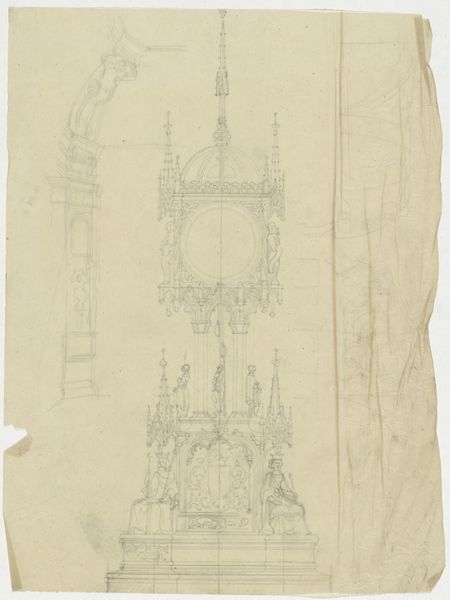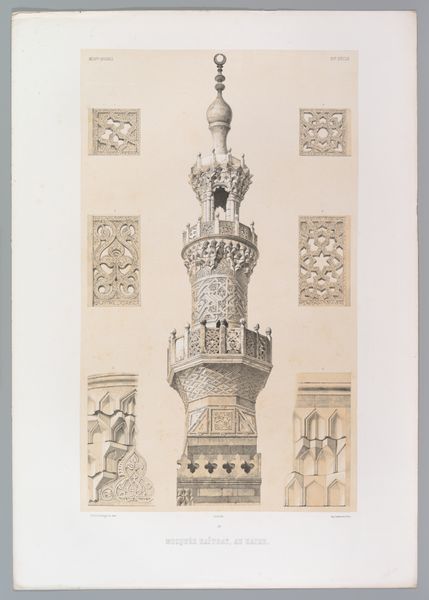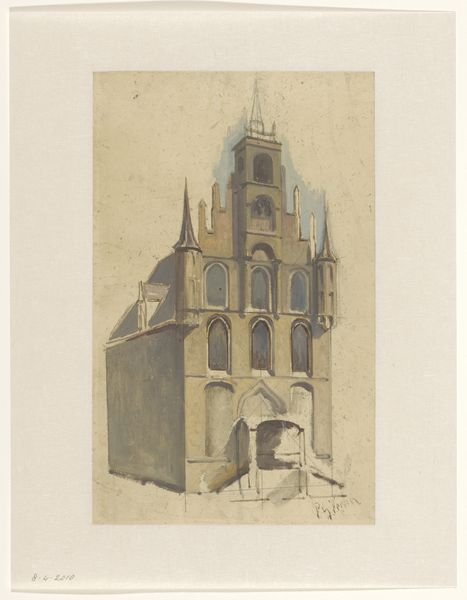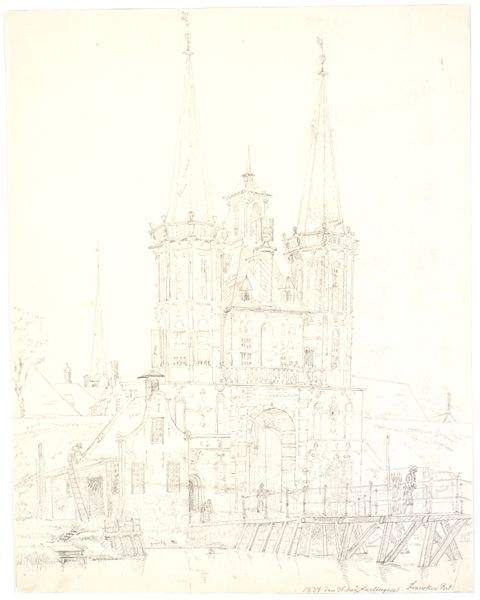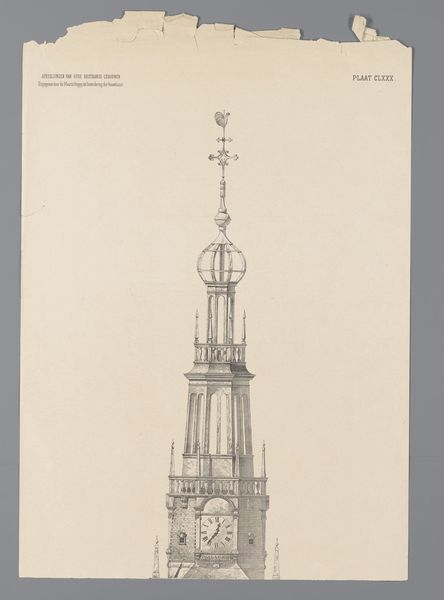
70. Mosquée Naçeriyeh, au Kaire; M. el Bordéni 1843
0:00
0:00
drawing, print, paper, ink, architecture
#
drawing
#
aged paper
# print
#
old engraving style
#
paper
#
ink
#
ancient-mediterranean
#
line
#
cityscape
#
islamic-art
#
architecture
Dimensions: Sheet: 22 3/8 × 15 5/8 in. (56.9 × 39.7 cm)
Copyright: Public Domain
Curator: Look at the crisp lines in this 1843 print by Joseph-Philibert Girault de Prangey, titled "70. Mosquée Naçeriyeh, au Kaire; M. el Bordéni." What catches your eye first? Editor: Well, the contrast is immediately striking. There’s something quite ghostly, almost architectural phantoms rendered on what looks like aged paper. It feels incredibly precise, yet simultaneously faded, as if glimpsed through time itself. Curator: That's it exactly. The meticulous line work captures the detailed architecture of these Cairo mosques, right down to the smallest carved accents. Yet there is something decidedly clinical about it. Editor: Precisely, it seems to lack the vitality one might expect from a cityscape depiction, perhaps intentionally emphasizing a sense of distance, even detachment. And let's consider the colonial context here, too. Such detailed documentation could be used as tools for control. Who benefits from this level of intricate architectural recording, and at what cost? Curator: That brings such an important layer to it. I find my eyes lingering on the differences in texture and ornamentation of each minaret. They each feel like different voices in conversation. And the lines really bring the light to life in the structures. Editor: Yes, the lines guide our eyes through these imposing structures. But think about what the artwork doesn't include; who's missing from the narrative? Where are the people, the daily life, the bustling markets? It speaks volumes about the artist's perspective, consciously omitting the human element. Curator: It is very deliberate. Ultimately I wonder if its an intentional homage. The buildings exist here as monolithic figures, worthy of individual contemplation and reverence. Editor: Perhaps, but by focusing solely on the structures, we risk losing sight of the vibrant cultural and historical context that shapes these sacred spaces. This raises critical questions about representation, power, and the complexities of cross-cultural interpretation.
Comments
No comments
Be the first to comment and join the conversation on the ultimate creative platform.
